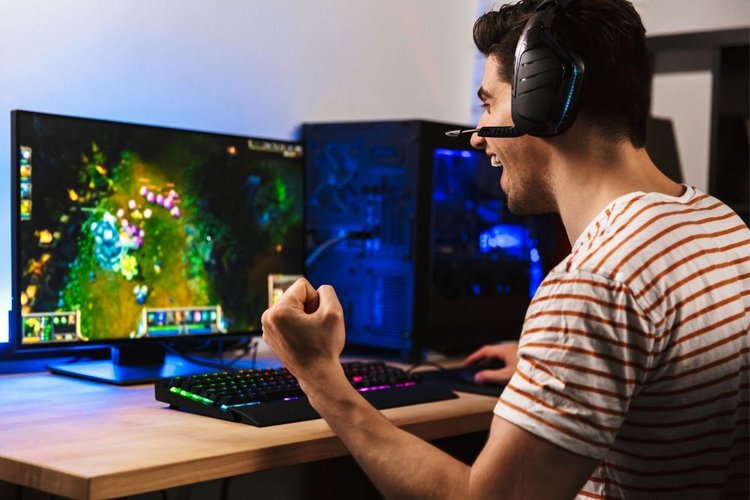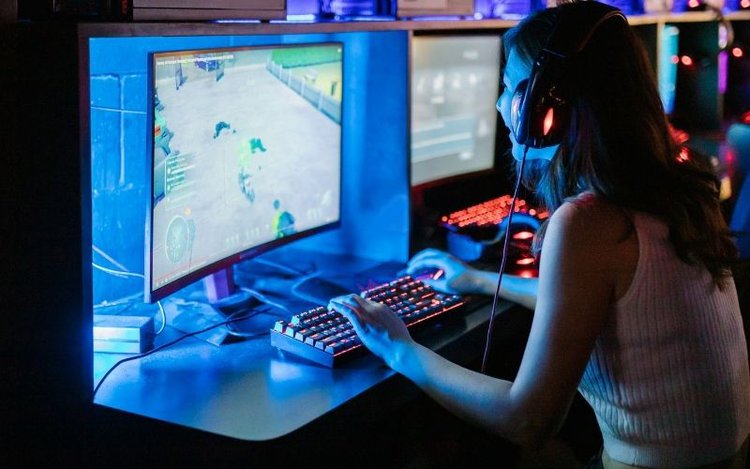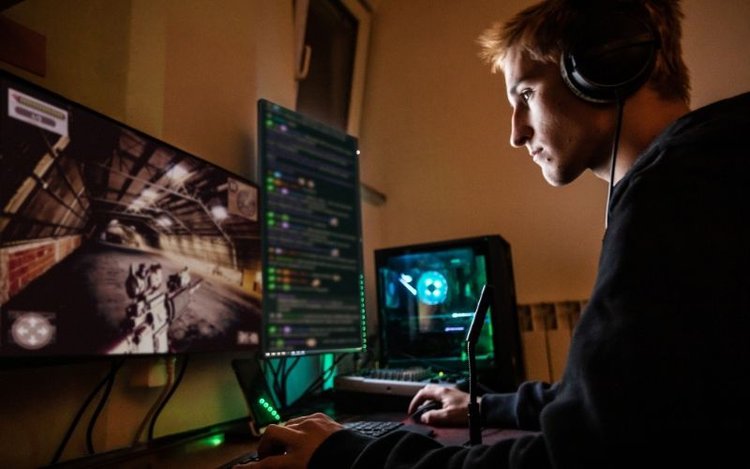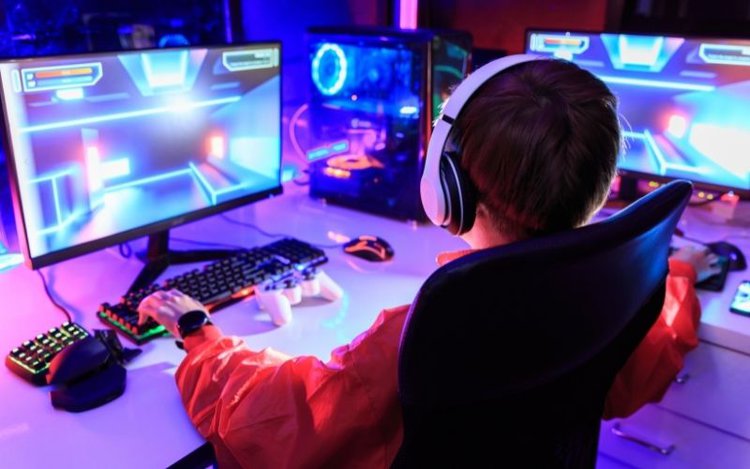4ms vs. 8ms: Is the Difference Noticeable?

What To Know
- 4ms response time is faster than 8ms, but the difference is generally not noticeable in everyday use.
- For gaming, especially in fast-paced scenarios, 4ms might be more suitable than 8ms.
- Despite 4ms being faster, the best choice depends on the monitor’s overall performance, including its refresh rate and input lag.
Navigating the gaming monitor realm? Understanding “response time” is crucial, especially when choosing between 4ms and 8ms monitors.
This article dives into the nuances, helping you select the optimal monitor for your needs.
Quick Navigation
Meanings of 4ms, 8ms
Response time is the time it takes for pixels in a monitor’s display to change colors.
4ms means it takes four milliseconds for the pixel to change from white to black or any other color combination chosen.
Similarly, 8ms denotes that it takes eight milliseconds for the color change.
Is the Difference Noticeable?
No, the difference between 4ms and 8ms is usually not noticeable, particularly if you’re not gaming.
But when playing games, 8ms and even 4ms could be a bit too slow, based on the game and the gamer.

For example, those who play fast-paced, first-shooter games may find both eight and 4ms response times too slow and may prefer something lower, such as 2ms or 1ms response periods.
But since input lag, refresh rate, and response time must work as a team, it’s quite likely the 2ms or 4ms speed seems insufficient due to the other two not being up to snuff.
If the display’s refresh rate is 240 Hz (4.16ms), the response time must be 4ms or lower. If it’s 8ms or greater, the monitor will not render visuals perfectly.
If the screen is a 120 Hz panel (8.34ms), the performance discrepancy between a 4ms and 8ms response time won’t be that noticeable. And in the case of a 60 Hz display, 4ms and 8ms may feel quite identical.
Response Time: TN Panels and IPS Displays

Yes, TN (twisted nematic) panels have lower response times than IPS (in-plane switching) screens.
TN panels, as a result, are more gaming-friendly since even a millisecond delay in response could decide the game’s fate.
But TN panels lose the viewing angles and color accuracy race in the pursuit of fast response times.
Fast refresh rates and response times don’t mix well with excellent picture quality, as greater color and contrast mean an increased workload or more information to push.
IPS displays are known for their wide viewing angles and accurate color reproduction. However, their response times and refresh rates are not class-leading.
IPS displays are primarily used for video and photo editing and other artist or creator-friendly tasks. For those vocations, a speedy response time is not critical.
IPS monitor response times average out at 8ms. But recent IPS displays are getting better, with response times hovering around the 4ms (or even lower) mark.
The AOPEN by Acer , for instance, is a 1080p IPS monitor with a 4ms response time. The Lenovo L28u-30 is a monitor with a 4K IPS screen with the same response speed.
Some high-quality TN panels try to balance picture quality and fast response times. But their picture quality is still not on par with IPS screens. IPS, on the other hand, is continuing to get better at refresh rates and response times.
For instance, the LG 27GP750-B Ultragear , ASUS VG248QG , and Acer Nitro VG272 are gaming monitors with IPS displays and response times of 1ms, 0.5ms, and 0.1ms, respectively.
What is Response Time?
Response time measures how long it takes for the pixels in a display to turn from one color to another (from black to white, for instance, or one shade of grey to another).
Response time is measured in milliseconds. It usually takes 1 to 10 milliseconds for a pixel to change color. The slight delay is not noticeable during regular tasks but during gaming or when playing content of similar nature.
Sometimes, the color transition is not fully done before the frame change. The discrepancy isn’t glaring even then, but that, of course, depends on the content you’re watching.
There could be blurriness in certain scenes where fast-moving objects over high-contrast backgrounds are depicted. If the response time is prolonged, the items in motion may leave behind a visible trail. The phenomenon is called “ghosting.”
Ghosting is particularly noticeable in fast-paced sports or FPS (first-person shooter) games as they follow in-motion objects.
Response Time and Refresh Rate

Ghosting is usually a concern if the response time is slower than the screen’s refresh rate.
Refresh rate is the number of times a display can draw a fresh image each second. It’s measured in Hertz (Hz). The lower a screen’s refresh rate is, the faster its response time must be.
A 60Hz screen’s refresh rate is approximately 16.7 milliseconds (1/60 x 1000), or the screen updates every 16.7 milliseconds to exhibit a new image.
If the display’s response time exceeds 16ms, it will exhibit blurring or ghosting issues during video playback or when playing games.
Things should be smooth if the response time is lower than the refresh rate or the panel changes pixel color before a new frame is drawn.
Response Time and Latency
Many confuse response time for “latency,” also called controller or input lag.
Latency denotes the time gap between a specific cause and effect or the time passed between transmitting an electrical signal and a corresponding action.
In simpler terms, it’s the period elapsed between clicking a mouse button or pressing a key and the point you get to see the intended output on the screen.
Watch the video below to learn more about how “input lag” is not the same as “response time:”
Response Time Figures are Indicative
The millisecond color transition delay called response time doesn’t apply to all colors. It could be for certain color combos or hues chosen by the display manufacturer.
For example, if the time for a pixel to change from black to white is 8ms, it may be less or more than 8ms for a complete change from yellow to green or blue to red. That means the response time for different colors could vary in the same display.
Also, the response time claimed could be the fastest number, not the average or a constant. The 1ms response speed marketed is usually “up to” 1ms and not the fixed speed.
In real-world usage, a monitor with an 8ms response time may be snappier than a 4ms display. Likewise, a certain 6ms monitor could be faster than another 6ms display made by a different company.
It depends on the exact colors being transitioned to and from and the testing standards employed.
FAQs
Is 4ms Response Time Good Enough for Gaming?
Generally, 4ms is snappy enough for seamless gaming. But it depends on who you ask. Some may not be happy even with a two or 1ms display, let alone a 4ms screen.
But then the disparity is also manufacturer-stemmed or the kind of testing they employ and measurements they take into consideration to arrive at response times.
As manufacturer-claimed response time figures are not always precise, uniform across the panel, or achievable in the real world, it’s possible some 1ms gaming monitors are not as fast as claimed.
Are There Monitors with a Response Time Less Than 1ms?
Yes, there are monitors with response times less than one millisecond—for example, the Alienware 34 (AW3423DW) Curved Gaming Monitor is up to 0.1ms fast. A couple of the monitors linked above also have less-than-1ms panels.
Conclusion
The response time of a display doesn’t matter as much as it used to before. Pretty much all modern monitors have very short response periods.
An 8ms response delay should be suitable for all intents and purposes, including some light gaming.
Less than 4ms becomes necessary only if you are a professional gamer, and each millisecond delay difference matters to your experience.
Considering how response time figures are arrived at, it’s recommended to view it as one of the three members of the holy trinity that also comprises “input lag” and “frame rate.”
If the input lag is high, even a low 1ms response time display may not cut it. And, the refresh rate must not be so high that the response time cannot catch up.
Catherine Tramell has been covering technology as a freelance writer for over a decade. She has been writing for Pointer Clicker for over a year, further expanding her expertise as a tech columnist. Catherine likes spending time with her family and friends and her pastimes are reading books and news articles.

